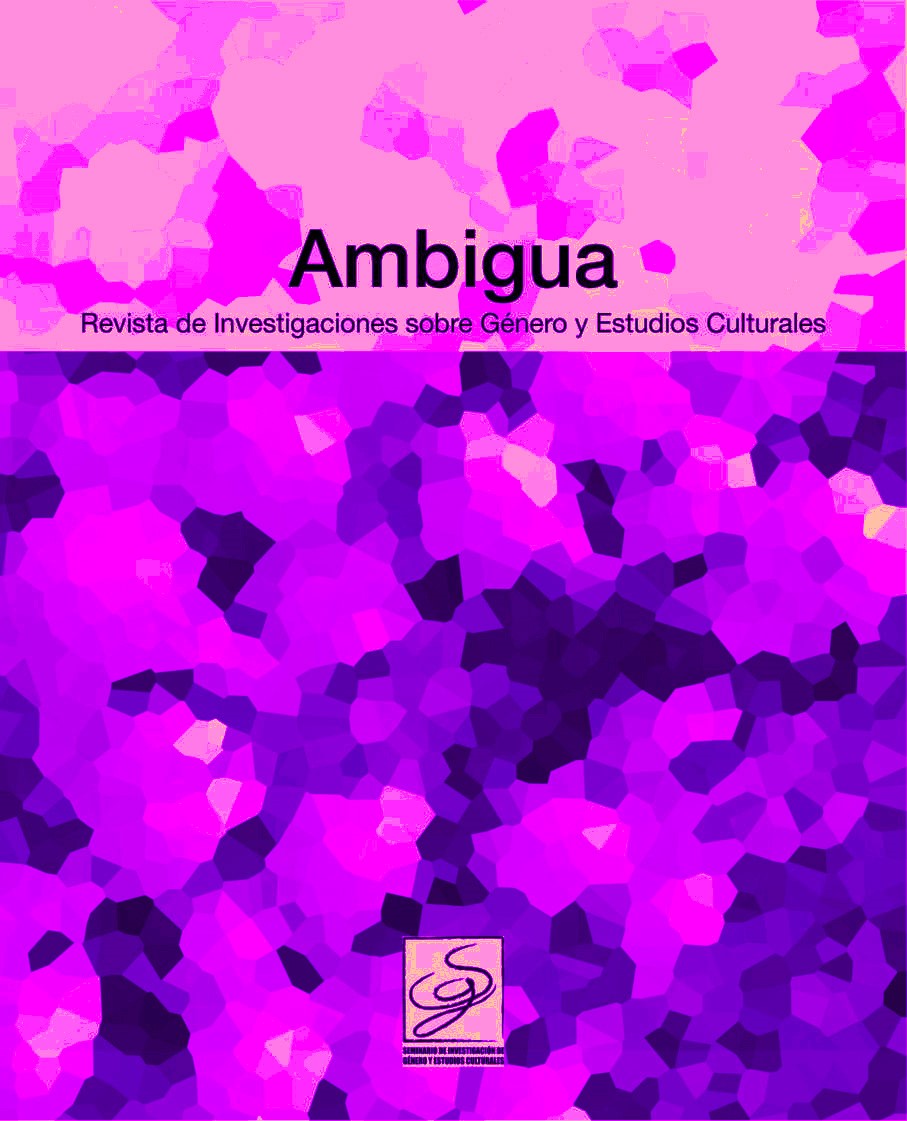Mónica, The Ugly, by Carolina de Soto y Corro.
DOI:
https://doi.org/10.46661/ambigua.10630Keywords:
Carolina de Soto y Corro, women of letters, female theatreAbstract
The purpose of this article is to analyze the representation of the young, but sick and unbeautiful body of the character of Mónica, the protagonist of La Fea, a play that is part of the anthology of Teatro para niños (1910-1917), by Carolina de Soto y Corro. The moralizing ideas, wich were being constructed at the beginning of the 20th century in Spain, that the author holds regarding female bodies, disciplined by the most rancid Catholicism, in which the abnegation and dedication of the protagonist is shown as an exemplum and model for other women, are especially evident.
Downloads
References
ARESTI ESTEBAN, Nerea. "El Ángel del hogar y sus demonios: Ciencia, religión y género en la España del siglo XIX". Historia contemporánea, nº. 21, 363-394, 2000.
ARISTÓTELES. "On the generation of Animal" Trad. Arthur Platt, eBooks@Adelaide, 2007. http://ebooks.adelaide.edu.au/a/aristotle/generation/index.html
BURGOS, Carmen de. "Arte de la elegancia". Valencia: Prometeo, 1918.
CALDERÓN, Alfredo. "Reacción femenina" en El Mercantil Valenciano, Valencia, nº 11, 535, año XXX, 1901.
CAPEL, Rosa María. El trabajo y la educación de la mujer en España (1900-1930). Madrid: Ministerio de Cultura, 1982.
CARMONA GONZÁLEZ, Ángeles. Escritoras andaluzas en la prensa de Andalucía del siglo XIX, Cádiz, Universidad-Instituto Andaluz de la Mujer. 246-253, 1999.
CASADO DELGADO, Juan. Las Bibliografías regionales y locales españolas. Evolución histórica y situación actual, Madrid, Ollero y Ramos, 24-25, 2003.
CANTIZANO MÁRQUEZ, Blasina. "La mujer en la prensa femenina del siglo XIX". Ámbitos: Revista Internacional de Comunicación, 11 y 12, 281-298, 2004. https://doi.org/10.12795/Ambitos.2004.i11-12.15
CASTRO, Fernando de. Discurso en la inauguración de las conferencias dominicales para la educación de la mujer. Madrid: Icaria Editorial, 1869.
CUENCA, Francisco. Biblioteca de autores andaluces contemporáneos, vol. II, Habana, Cuenca, 1925.
DÍAZ FREIRE, José Javier. "La reforma de la vida cotidiana y el cuerpo femenino durante la dictadura de Primo de Rivera". En CASTELLS, L: El rumor de lo cotidiano. Estudios sobre el País Vasco Contemporáneo. Bilbao, Universidad del País Vasco, 1999.
GABARDÓN DE LA BANDA, José Fernando. "Mercedes de Velilla y Carolina de Soto y Corro, poetisas y socias honorarias en el seno del Centro Mercantil de Sevilla". Círculo Mercantil e Industrial de Sevilla, 2020. Recuperado de: https://mercantilsevilla.com/noticias/93-el-mercantil-en-casa/3991-mercedes-de-velilla-y-carolina-de-soto-y-corro-poetisas-y-socias-honorarias-en-el-seno-del-centro-mercantil-de-sevilla [Fecha de consulta: 5 mayo 2024].
GALLEGO AYALA, Juana. Mujeres de papel: De '¡Hola!' A 'Vogue': la prensa femenina en la actualidad. Barcelona: Icaria, 1990.
HORMIGÓN, Juan Antonio (dir.). Autoras en la Historia del Teatro Español, vol. II, Madrid, Asociación Directores de Escena de España, 1226-1253, 1997.
NASH, Mary. "Mujer, familia y trabajo en España (1875-1936). Barcelona: Anthropos, 1983.
MÉNDEZ BEJARANO, Mario. Diccionario de escritores, maestros y oradores naturales de Sevilla y su actual Provincia", Sevilla : Gironés, 1922.
NIEVA DE LA PAZ, Pilar. Autoras dramáticas españolas entre 1918 y 1936. Madrid: Consejo Superior de Investigaciones Científicas Instituto de Filología, 1993.
PERINAT, Adolfo; MARRADES, María Isabel. Mujer, prensa y sociedad en España: 1800-1939. Madrid: Centro de Investigaciones Sociológicas, 1980.
SALGADO, Marta. "La olvidada historia de Carolina de Soto y Corro, fundadora de la revista 'Asta Regia'". Informando desde Madrid, 2015. Recuperado de https://informandodesdemadrid.wordpress.com/2015/03/18/laolvidada-historia-de-carolina-de-soto-y-corro-fundadora-de-larevista-asta-regia/ [Fecha de consulta: 6 mayo 2024].
SAN MARTÍN, Alejandro. "Trabajo de las mujeres". En Mujer, familia y trabajo en España, 1876-1936. Barcelona: Anthropos, 1983.
SIMÓN PALMER, María Del Carmen. Escritoras españolas del siglo XIX. Manual bio-bibliográfico, Madrid, Castalia, págs. 675-683, 1991.
STOLL, Pamela. El discurso de la prensa femenina: Análisis de los actos de habla en titulares de revistas femeninas británicas. Alicante: Universidad de Alicante, 1994.
SUÁREZ ORTEGA, Magdalena; PADILLA CARMONA, María Teresa. "Violencia simbólica y violencia doméstica: cancelación del cuerpo femenino, desautorización y pérdida de libertad". En Mercedes Arriaga Flórez y José Manuel Estéves Saá. Cuerpos de mujer en sus (con)textos. Sevilla: Arcibel, pp. 375-383, 2005.
Downloads
Published
How to Cite
Issue
Section
License
Copyright (c) 2024 María José Ruiz León

This work is licensed under a Creative Commons Attribution-NonCommercial-ShareAlike 4.0 International License.
The authors agree with the following:
1. Authors retain copyright and grant the journal right of first publication with the work simultaneously licensed under a license Attribution-NonCommercial-ShareAlike 4.0 International (CC BY-NC-SA 4.0) that allows others to share the work with an acknowledgement of the work's authorship and initial publication in this journal.
2. Authors are able to enter into separate, additional contractual arrangements for the non-exclusive distribution of the journal's published version of the work (e.g., post it to an institutional repository or publish it in a book), with an acknowledgement of its initial publication in this journal.
3. Authors are permitted and encouraged to post their work online (e.g., in institutional repositories or on their website) prior to and during the submission process, as it can lead to productive exchanges, as well as earlier and greater citation of published work (See The Effect of Open Access).









